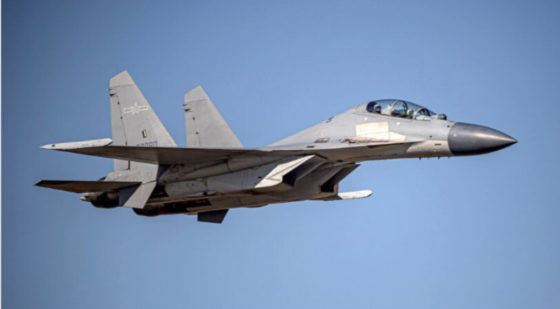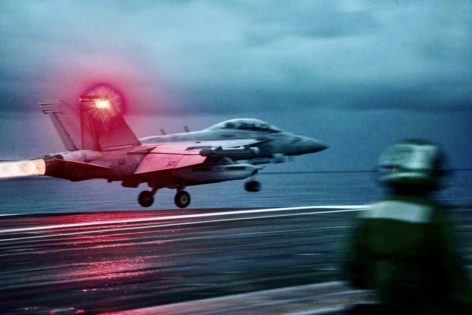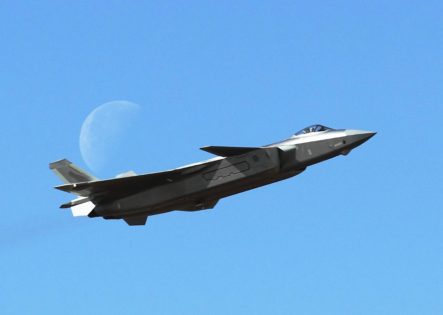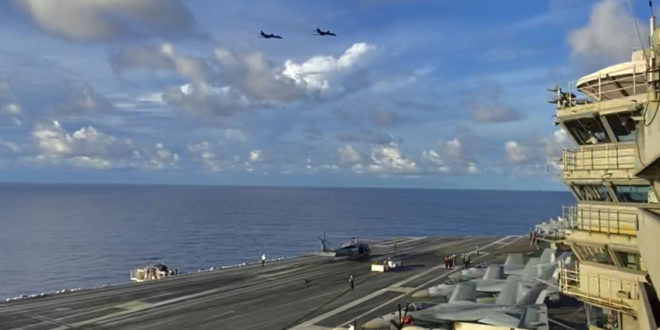
For decades, the United States military has benefited from having air superiority over its enemies in all its conflicts around the world. The Pentagon’s multibillion-dollar investment in advanced warplanes, weapons systems, satellites and aircraft carriers has made air power a central part of America’s global projection of military might.
However, China’s People’s Liberation Army (PLA) is rapidly modernizing, and military leaders and analysts say that Washington may no longer be able to always rely on its air superiority.
Speaking at an Air Force Association conference last month, General Charles Brown Jr., chief of staff of the Air Force, said the PLA had what he called “the largest aviation forces in the Pacific” and had developed them “underneath our nose.” Brown predicted China could overcome U.S. air superiority by 2035.
At the same event, Lieutenant General S. Clinton Hinote, a deputy chief of staff, warned that the U.S. was not keeping pace with China’s advancements. “In a few important areas, we’re behind — tonight. This is not a tomorrow problem. This is a today.”
Hinote told reporters that as somebody who was aware of the evidence at all classification levels, he believed that China had caught up with the U.S. air power advancements, and he warned “the light is blinking red.”

Showing its might
Last week, China sent almost 150 warplanes, including its most advanced J-16 fighter jets and H-6 bombers, into Taiwan’s air defense identification zone, or ADIZ, in a complex demonstration of its military might.
“They’re putting together packages of fighter aircraft, the J-16 in particular, flown in large numbers. And that’s a relatively new capability,” said Eric Heginbotham, a principal research scientist at MIT’s Center for International Studies. “They’re putting complete packages together. They’re also sending anti-submarine warfare aircraft up. So, they’re showing a lot.”
According to an article published on the U.S. Air Force’s official website, Air Force Secretary Frank Kendall mentioned China 27 times in his closely watched address to the AFA conference last month. In comparison, he mentioned Russia once and Afghanistan three times. Kendall, the top civilian leader of the USAF, also pledged in August to develop more leading technologies that “scare China.”
Emboldened by China’s newly gained air might, Wang Wei, a senior PLA air force official, responded last month to Kendall’s “scare China” comment by inviting the USAF to meet in the sky: “A foreign colleague claimed recently to make the Chinese Air Force feel scared. Well, as long as you are not scared, let us meet in the cloud!”
Where USAF superiority may end
China’s flights near Taiwan last week demonstrate the improving capabilities of the PLAAF. Cristina Garafola, an associate policy researcher at the RAND Corporation, wrote in an email to VOA that when combined with China ground-based air defense forces, “these growing capabilities will increase the complexity of operations in the air domain in the Indo-Pacific.”
Timothy Heath, a senior defense researcher at the RAND Corporation, said that while the PLAAF still lags the USAF in technological capabilities and warfighting prowess, its large numbers of land-based fighters pose a threat to any U.S. effort to intervene in a fight over Taiwan.
He told VOA that because of its proximity to Taiwan, the PLA can use many complementary weapons, such as surface-to-air missiles and anti-ship ballistic missiles, to attack U.S. carriers, air bases and aircraft. “This counter-intervention capability could help even the odds for the PLA air force in a major fight near Taiwan.”

Analysts also said distance would be a factor in any air warfare in the Pacific. Taiwan is just 161 kilometers from China’s coast, compared with more than 700 kilometers from U.S. airbases in Okinawa, Japan, and more than 2,700 kilometers from Guam.
“The U.S. may gain short-term control of the air over Taiwan, but it’s too distant to do this for more than short time periods, such as an hour or two,” Peter Layton, a visiting fellow at Griffith Asia Institute in Brisbane, Australia, told VOA.
In an interview last month with Air Force Times, Kendall said it was an assumption that the U.S. was the dominant power. “We’re the dominant military power until you get within about 1,000 miles (1,610 kilometers) of China, and that starts to change,” he said.
According to Heginbotham of MIT, a specialist in Asian security issues, less than 15% of U.S. air inventories are in the western Pacific, and the U.S. does not have all its aircraft flying around the clock. “The difference is probably that China can challenge you at their superiority locally and for certain periods of time.” he said in a telephone interview with VOA.
Calling China an “apex peer adversary” with vast capabilities in electromagnetic spectrum operations, General Mark Kelly, the commander of Air Combat Command, said last month that the USAF could lose such a fight. He noted that China has already claimed parts of the South China Sea “without firing a shot.”
Supremacy and superiority
Over the years, several studies have found that America may be on track to lose its air superiority over China.
In 2015, a study at the California-based RAND Corporation think tank, of which Heginbotham was the lead author, found that while the U.S. still maintained unparalleled air-to-air capabilities, “continuous improvements to Chinese air capabilities make it increasingly difficult for the United States to achieve air superiority within a politically and operationally effective time frame, especially in a scenario close to the Chinese mainland.”
A 2016 Department of Defense study on the same subject noted that emerging integrated and networked air-to-air, surface-to-air capabilities “threaten the Air Force’s ability to provide air superiority at the times and places required in the highly contested operational environments of 2030 and beyond.”
“The 2016 USAF air superiority study was adamant that the U.S. was on track to lose air superiority in fighting distant wars,” Layton told VOA. “The USAF has equipment modernization programs to help address this, like the B-21 and Next Generation Air Dominance fighter, but these are unlikely to make a real difference until the 2030s.”
Layton argued in a blog post that the USAF’s way of thinking about projecting air power had changed over the years since the Cold War. When Washington saw itself as the world’s lone superpower, the common term was “air supremacy.” Now, when the air threat is manageable at certain times and places, the objective is “air superiority.”
Reported by VOA
 Soldier of Fortune Magazine The Journal of Professional Adventurers
Soldier of Fortune Magazine The Journal of Professional Adventurers






